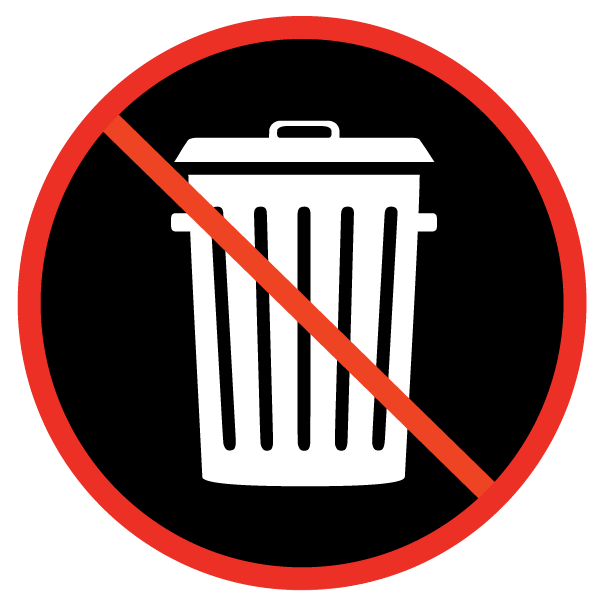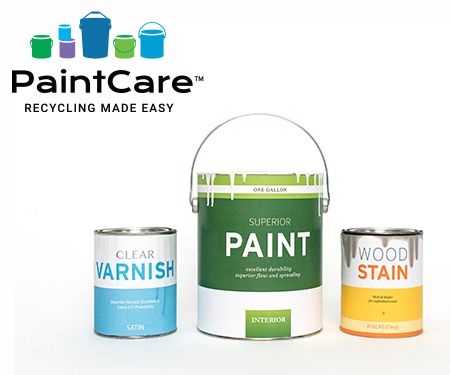 Paint is banned from the landfill in Vermont.
Paint is banned from the landfill in Vermont.
Why is it important to properly dispose of paints?
Paint is a mixture of resins, solvents, additives, and pigments. The two primary types of paint differ by their base liquid: oil or latex (water-based). Oil paints are hazardous, flammable, and give off large amounts of volatile organic compounds (VOCs) that contribute to air pollution and can cause liver and kidney damage after long-term exposure. Older paints may also contain harmful heavy metals, such as lead and mercury. Latex paint is not as harmful to human health and the environment, if handled properly.
Proper management of paint lessens harmful impacts on our environment and is a better use of resources than landfilling leftover or unwanted paint.
- Latex paint can often be recycled into new paint and oil-based paint can be re-blended and used as fuel.
- Do not dump liquid paint down drains or in the trash.
- If you have hardened latex paint, check with your local solid waste management entity to see if it's ok to dispose of it in the trash.
- Never throw oil-based paint in the trash, whether it is hardened or liquid.
Click here to find free drop-off locations to recycle your paint.

How to manage and dispose of paint:
-
Store all of your paint in a temperature controlled room. Freezing temperatures (especially multiple cycles of freezing and thawing) can cause paint to go bad.
-
PaintCare offers free paint recycling/disposal at many convenient locations throughout Vermont, including paint retailers, recycling centers, hazardous waste facilities and collection events. The program is funded by a small fee added to paint purchased in Vermont.
-
Paint is considered a type of household hazardous waste (HHW). Towns and solid waste districts hold HHW collection events every year, two per year at minimum (spring and fall) and many common household hazardous wastes can be disposed of at these events. For more information and event scheduling, contact your solid waste district. Find contact information on the solid waste district contact list page. (Note: If you live in a village, fire district, etc., please select the town your village, fire district, etc. is in from the list. If your town is not a member of a district, contact information for your town clerk is provided.
Vermont Paint Stewardship Program Information:
The Vermont Legislature passed the Paint Product Stewardship Act (Act 58) in May 2013 to promote the proper management and recycling of paint. This legislation made manufacturers responsible for collecting and managing leftover architectural paint (both oil and latex) through a stewardship organization. PaintCare is the stewardship organization for the American Coatings Association, and has implemented the stewardship program for paint manufacturers in Vermont since May 1, 2014.
Paint Information.
-
Final Vermont Paint Stewardship Program Plan (PDF) updated October 16, 2023
-
ANR Approval Letter for Paint Stewardship Plan (PDF) October 16, 2023
-
Advertising Videos for TV/YouTube: 15-second video
-
Printable Resources: Quick reference guide for collectors
-
Outreach Materials that can be ordered from PaintCare with this order form
Training for PaintCare Drop-Off Sites with John Hurd, PaintCare
An overview of the drop-off site training provided by the manufacturer-funded program. The slides are in the training binder supplied to every drop off site. They cover the origin of the program, funding, supplies and outreach materials, which products are accepted, how to have bins picked up once full, spill response, and frequently asked questions. For more information on the PaintCare program in Vermont go to the PaintCare webpage.
